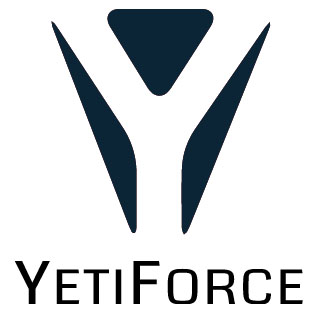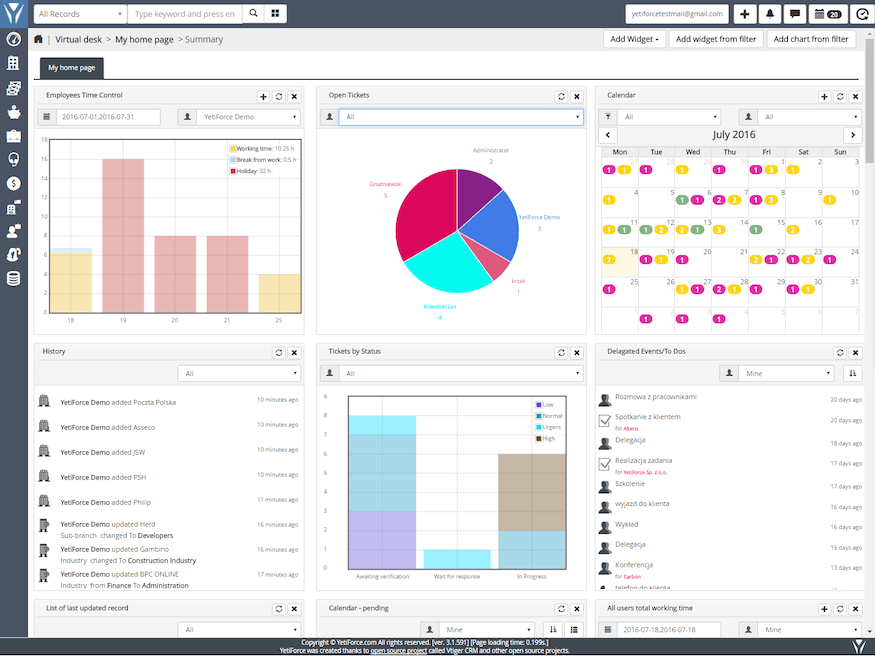
In this tutorial, we will show you how to install YetiForce on Ubuntu 20.04 LTS. For those of you who didn’t know, YetiForce is an open-source and innovative CRM system. It is built on top of Vtiger and has hundreds of changes that help to accomplish even the most challenging tasks in the simplest way. YetiForce manages relations with customers, suppliers, partners, and staff. It offers efficiency, control, and multitasking and can integrate with other applications such as maps, LDAP, DAV applications, SMS, and social media portals.
This article assumes you have at least basic knowledge of Linux, know how to use the shell, and most importantly, you host your site on your own VPS. The installation is quite simple and assumes you are running in the root account, if not you may need to add ‘sudo‘ to the commands to get root privileges. I will show you the step-by-step installation of YetiForce CRM on Ubuntu 20.04 (Focal Fossa).
Prerequisites
- A server running one of the following operating systems: Ubuntu 20.04, 18.04, and any other Debian-based distribution like Linux Mint or elementary OS.
- It’s recommended that you use a fresh OS install to prevent any potential issues.
- A
non-root sudo useror access to theroot user. We recommend acting as anon-root sudo user, however, as you can harm your system if you’re not careful when acting as the root.
Install YetiForce on Ubuntu 20.04 LTS Focal Fossa
Step 1. First, make sure that all your system packages are up-to-date by running the following apt commands in the terminal.
sudo apt update sudo apt upgrade
Step 2. Installing the LAMP server.
A Ubuntu 20.04 LAMP server is required. If you do not have LAMP installed, you can follow our guide here.
Step 3. Installing YetiForce on Ubuntu 20.04.
By default, YetiForce is not available on Debian 11 base repository. So, now we download the latest stable version of YetiForce CRM from the official page:
wget https://excellmedia.dl.sourceforge.net/project/yetiforce/YetiForce%20CRM%206.x.x/6.3.0/YetiForceCRM-6.3.0-complete.zip
Next, extract the downloaded file:
sudo unzip YetiForceCRM-6.3.0-complete.zip -d /var/www/yetiforce
Set the file permissions for the YetiForce directory:
sudo chown -R www-data:www-data /var/www/yetiforce sudo chmod -R 755 /var/www/yetiforce
Step 4. Configuring MariaDB.
By default, MariaDB is not hardened. You can secure MariaDB using the mysql_secure_installation script. You should read and below each step carefully which will set the root password, remove anonymous users, disallow remote root login, and remove the test database and access to secure MariaDB:
mysql_secure_installation
Configure it like this:
- Set root password? [Y/n] y - Remove anonymous users? [Y/n] y - Disallow root login remotely? [Y/n] y - Remove test database and access to it? [Y/n] y - Reload privilege tables now? [Y/n] y
Next, we will need to log in to the MariaDB console and create a database for YetiForce. Run the following command:
mysql -u root -p
This will prompt you for a password, so enter your MariaDB root password and hit Enter. Once you are logged in to your database server, you need to create a database for YetiForce installation:
MariaDB [(none)]> CREATE DATABASE yetiforce_db; MariaDB [(none)]> CREATE USER 'yetiforce_user'@'localhost' IDENTIFIED BY 'your-strong-password'; MariaDB [(none)]> GRANT ALL PRIVILEGES ON yetiforce_db.* to yetiforce_user@'localhost'; MariaDB [(none)]> FLUSH PRIVILEGES; MariaDB [(none)]> exit
Step 5. Configuring Apache.
Now we create an Apache virtual host configuration file with the following command below:
sudo nano /etc/apache2/sites-available/yetiforce.conf
Add the following file:
<VirtualHost *:80>
ServerAdmin admin@your-domain.com
DocumentRoot /var/www/yetiforce
ServerName example.com
ServerAlias www.example.com
<Directory /var/www/yetiforce/>
Options FollowSymlinks
AllowOverride All
Require all granted
</Directory>
ErrorLog ${APACHE_LOG_DIR}/error.log
CustomLog ${APACHE_LOG_DIR}/access.log combined
</VirtualHost>
Save and close, then restart the Apache webserver so that the changes take place:
sudo a2ensite yetiforce.conf sudo a2enmod rewrite sudo systemctl reload apache2
Step 6. Accessing YetiForce Web Interface.
Once successfully installed, open your web browser and type the URL https://your-domain.com to access the YetiForce web UI. You should see the following screen:

Congratulations! You have successfully installed YetiForce. Thanks for using this tutorial for installing YetiForce CRM on your Ubuntu 20.04 Focal Fossa. For additional help or useful information, we recommend you to check the official YetiForce website.